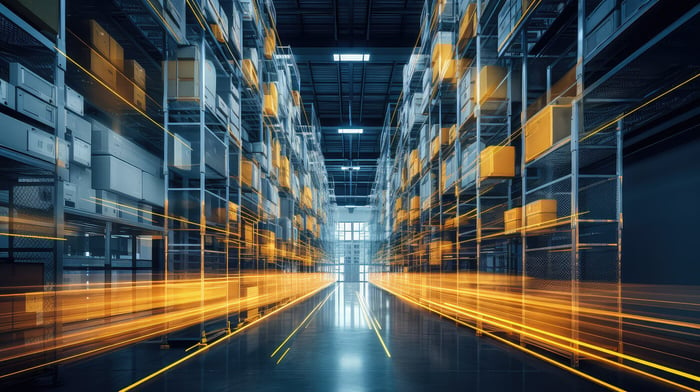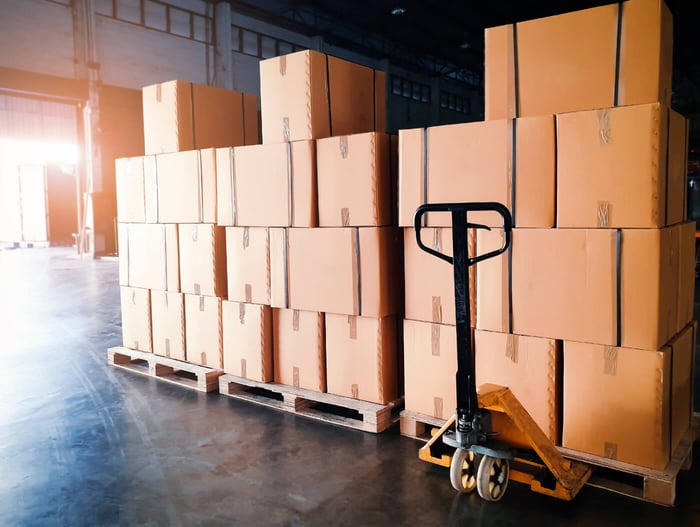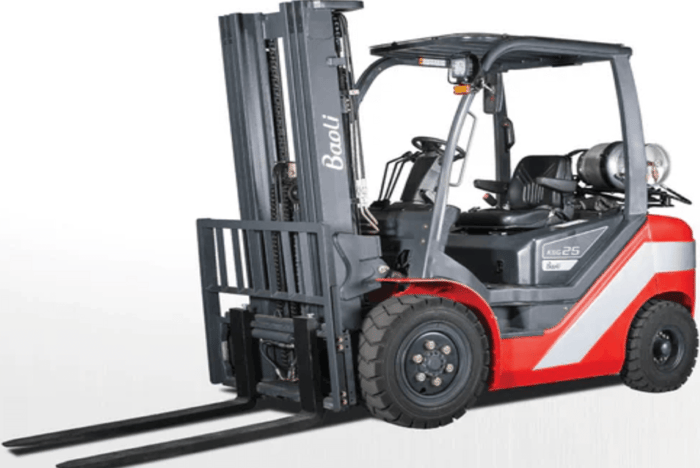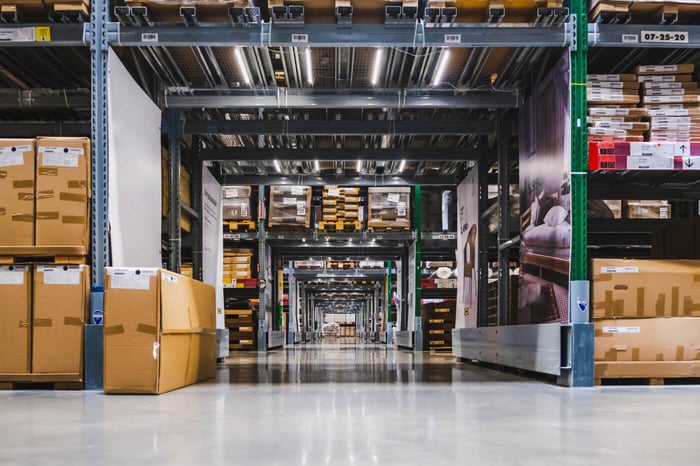In dynamic logistics and supply chain management, an operation is only as good as its storage space utilization. Warehouse operators are tasked with streamlining and maximizing their warehouse space to drive costs down and efficiency up. That includes exploring a variety of storage solutions, like double-deep pallet racking.
Double-deep pallet racking is a compelling strategy among the myriad storage solutions available. It offers operations the potential to significantly increase storage capacity without compromising accessibility.
If you’re wondering whether double-deep racking would work for your warehouse, this guide is for you. Here, we’ll dive into the intricacies of double deep pallet racking (a double entendre! ), exploring its benefits, considerations, and suitability within diverse warehouse environments.
By delving into the nuances of this storage solution, as warehouse managers, you’ll be equipped with the insights necessary to make informed decisions. Especially regarding their storage infrastructure, ultimately driving efficiency and productivity within their operations.
What is Double Deep Pallet Racking?
Double deep pallet racking is a type of system that stores two pallets back-to-back. Compared to a single deep configuration, these racking systems double the storage density while requiring only a marginally larger space.
So, what does a double-deep rack structure typically consist of? Upright frames and horizontal beams, just like any other pallet racking system. The difference lies in the depth of the storage bays. Since the racking system is designed to accommodate two pallets placed back-to-back.
Common Industries that Use Double Deep Pallet Racking
Next, we’ll get even more specific with the advice. As it always helps to learn from other leading competitors in your industry. Double deep pallet racking is widely utilized across various industries where space optimization is critical. Some of the industries that commonly use double deep racking include:
-
Retail Distribution: Retailers with large volumes of fast-moving consumer goods often employ double deep pallet racking to maximize storage capacity while maintaining accessibility to popular products.
-
Food and Beverage: Double-deep pallet racking provides increased storage density, enabling effective inventory management and rotation for warehouse facilities storing perishable or non-perishable food items.
-
Automotive Parts: Suppliers and distributors of automotive parts frequently utilize double deep pallet racking to accommodate the diverse range of products while optimizing space within their warehouses.
-
E-commerce Fulfillment: With the exponential growth of e-commerce, fulfillment centers face the challenge of efficiently storing and managing a vast array of products. Double deep pallet racking enables these facilities to handle high volumes of inventory while maximizing available space.
-
Manufacturing and Industrial: Companies involved in manufacturing and industrial production often utilize double deep pallet racking to store raw materials, components, and finished goods, allowing them to streamline their supply chain operations and improve overall efficiency.
Overall, double-deep pallet racking is a viable way for businesses to enhance their storage capabilities. It enhances efficiency and maximizes space. By carefully considering their operations' specific requirements and challenges, organizations can leverage this storage system to unlock significant benefits in terms of space utilization, inventory management, and cost savings.
Pros and Cons of Double Deep Pallet Racking
Of course, before changing your warehouse logistics, it’s logical to review the pros and cons of the system. To begin, let’s weigh some of the most common pros and cons to consider:
Pros
-
Increased Density: Double deep racking allows more pallets to be stored in the same footprint as single deep racking, maximizing warehouse space utilization.
-
Cost Efficiency: Reducing your space footprint also reduces the need for additional storage space or racking. This can lead to cost savings in terms of warehouse space and equipment.
-
Improved Organization: Organization always equals efficiency. Double-deep systems help organize inventory more efficiently, especially for warehouses dealing with large volumes of the same SKU (stock-keeping unit).
-
Enhanced Safety: The safety of workers is paramount for any operation. With fewer aisles, forklifts need less maneuvering, potentially decreasing the risk of accidents.
-
Scalability: As any smart business owner knows, scaleability is the name of the game for growing profits. Double-deep racking systems easily expand and are ideal for reconfiguring as storage needs change over time.
Cons
-
Reduced Selectivity: Stacking pallets side-by-side limits access to back pallets. It requires the front pallet to be moved first, making the system less suitable overall for operations that need frequent access to a wide variety of products.
-
Specialized Equipment: To effectively use double deep racking, warehouses typically need deep-reach or double-reach forklifts. These types of forklifts can extend further to access the back pallets. Cost-wise, this equipment can be more expensive and requires specialized training.
-
Increased Handling: Moving front pallets to access back pallets can increase the time and labor involved in picking and restocking items, potentially leading to decreased operational efficiency for high-turnover items.
-
Limited Visibility: Since pallets are stored back-to-back, it can be more challenging for operators to see and access the back pallets, increasing the potential for errors in picking.
-
FIFO (First In, First Out) Challenges: Maintaining a strict FIFO inventory system can be more difficult with double-deep racking. Accessing older stock might require moving newer stock, complicating management.
The Bottom Line
For product-based businesses, managing an efficient inventory and a streamlined warehouse is key to success. It not only improves employee morale but can also increase customer loyalty, and vendor relations.
In this article, you’ve learned how double deep racking works, the most commonly implemented industries, and the storage system’s pros and cons. Now, you can gauge whether or not the system will work for you.
Need help designing warehouse storage solutions? At BMH, we’re storage solution experts. In addition to a large selection of equipment and shelving, our experts are specialists at providing a custom quote that’ll optimize the way you work. We can even help with installation!
Learn more, or get in touch, now.




